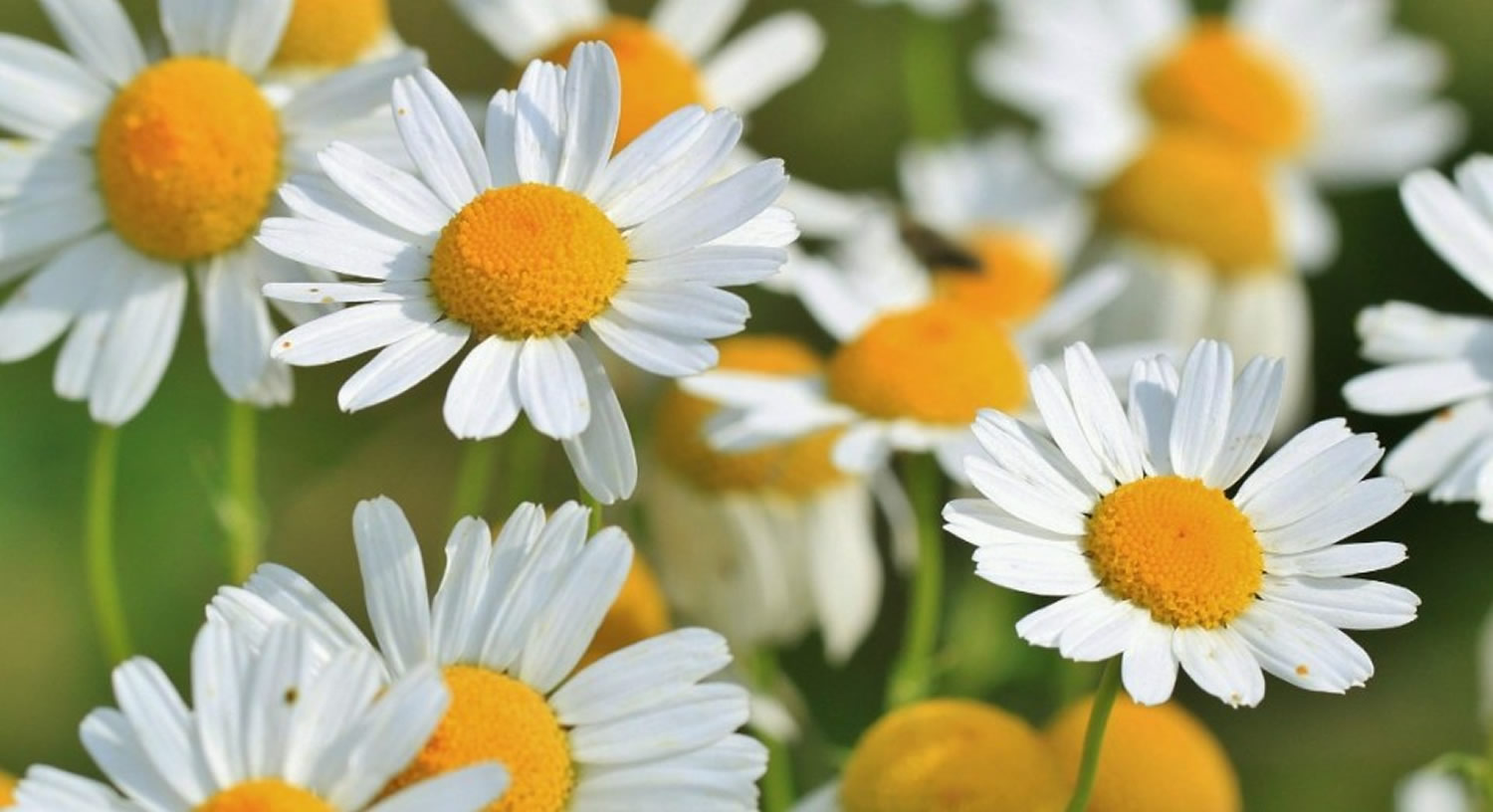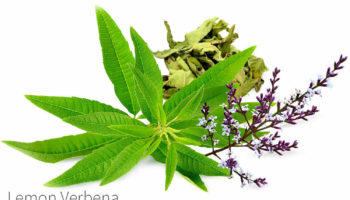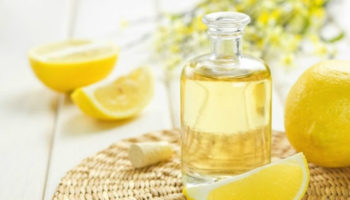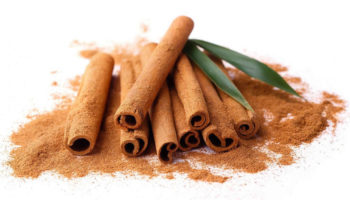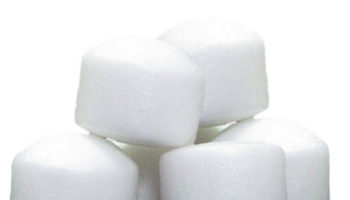Contents
- What is camomile
- Bioactive Compounds of Camomile
- Camomile benefits
- What is camomile good for ?
- Sleep aid/sedation
- Anxiety and seizure
- Anti-inflammatory and antiphlogistic properties of Camomile
- Anticancer activity
- Common cold
- Cardiovascular conditions
- Colic/Diarrhea conditions
- Eczema
- Gastrointestinal conditions
- Hemorrhoids
- Health Promotion
- Inflammatory conditions
- Mucositis
- Osteoporosis
- Diabetes
- Sore throat/hoarseness
- Vaginitis
- Wound healing
- Quality-of-life in cancer patients
- Contraindications and Safety Issues with Camomile
What is camomile
Camomile or Chamomile (American English) is the common name for several daisy-like plants of the family Asteraceae or Compositae family and represented by two common varieties viz. German camomile (Chamomilla recutita) and Roman camomile (Chamaemelum nobile) 1. Extracts, oils and teas made from camomile are used for its soothing qualities as a sedative, mild analgesic and sleep medication. The dried flowers of camomile contain many terpenoids and flavonoids contributing to its medicinal properties 2. Camomile preparations are commonly used for many human ailments such as hay fever, inflammation, muscle spasms, menstrual disorders, insomnia, ulcers, wounds, gastrointestinal disorders, rheumatic pain, and hemorrhoids 2, 3. Essential oils of camomile are used extensively in cosmetics and aromatherapy. Many different preparations of camomile have been developed, the most popular of which is in the form of herbal tea consumed more than one million cups per day.
Camomile flower
The hollow, bright gold cones of the camomile flowers are packed with disc or tubular florets and are ringed with about fifteen white ray or ligulate florets (see Figure 1 and 2). The flowering tops of the camomile plant are used to make teas, liquid extracts, capsules, or tablets. The herb can also be applied to the skin as a cream or an ointment, or used as a mouth rinse.
Figure 1. German camomile flower (Chamomilla recutita)
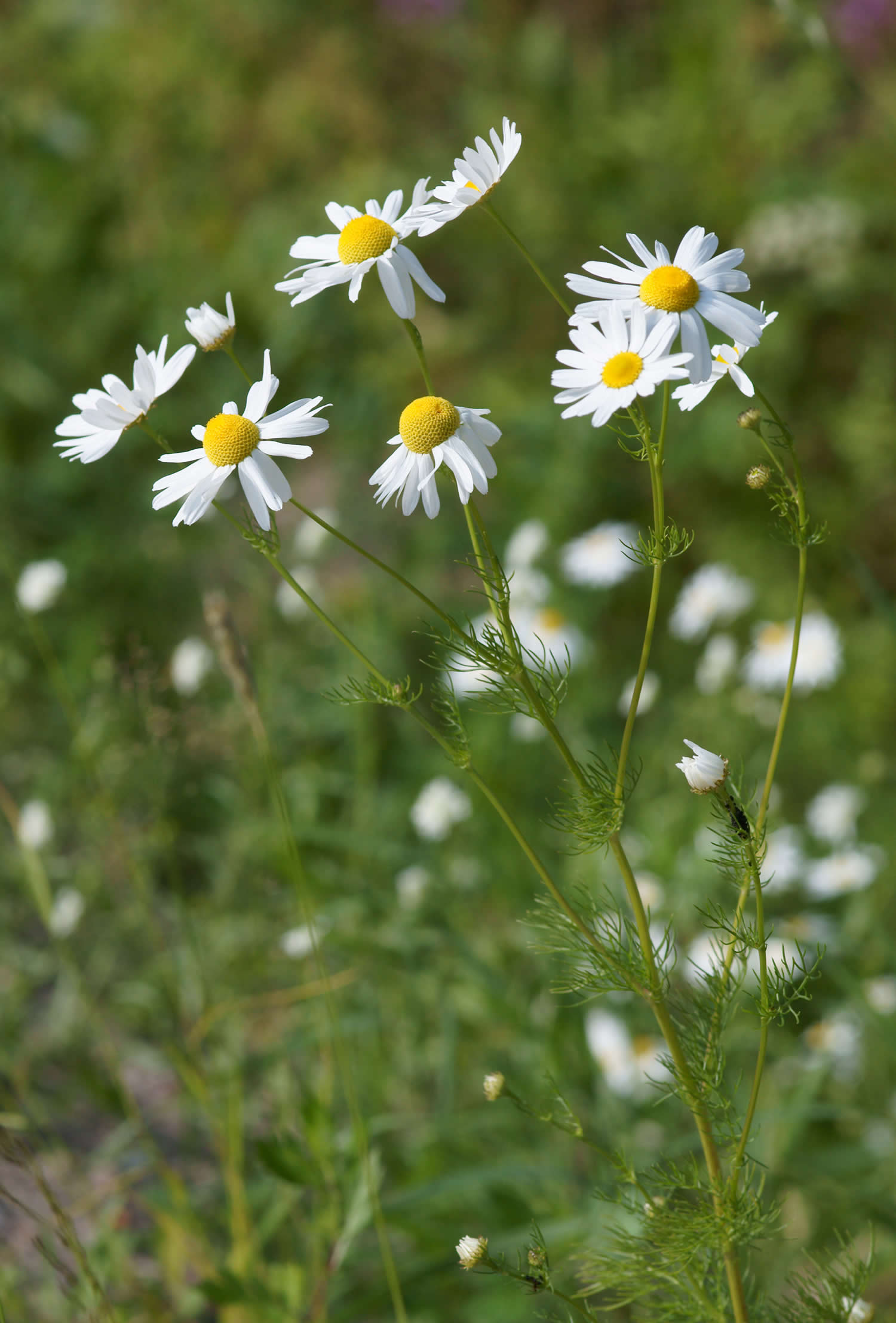
Figure 2. Roman camomile flower (Chamaemelum nobile)
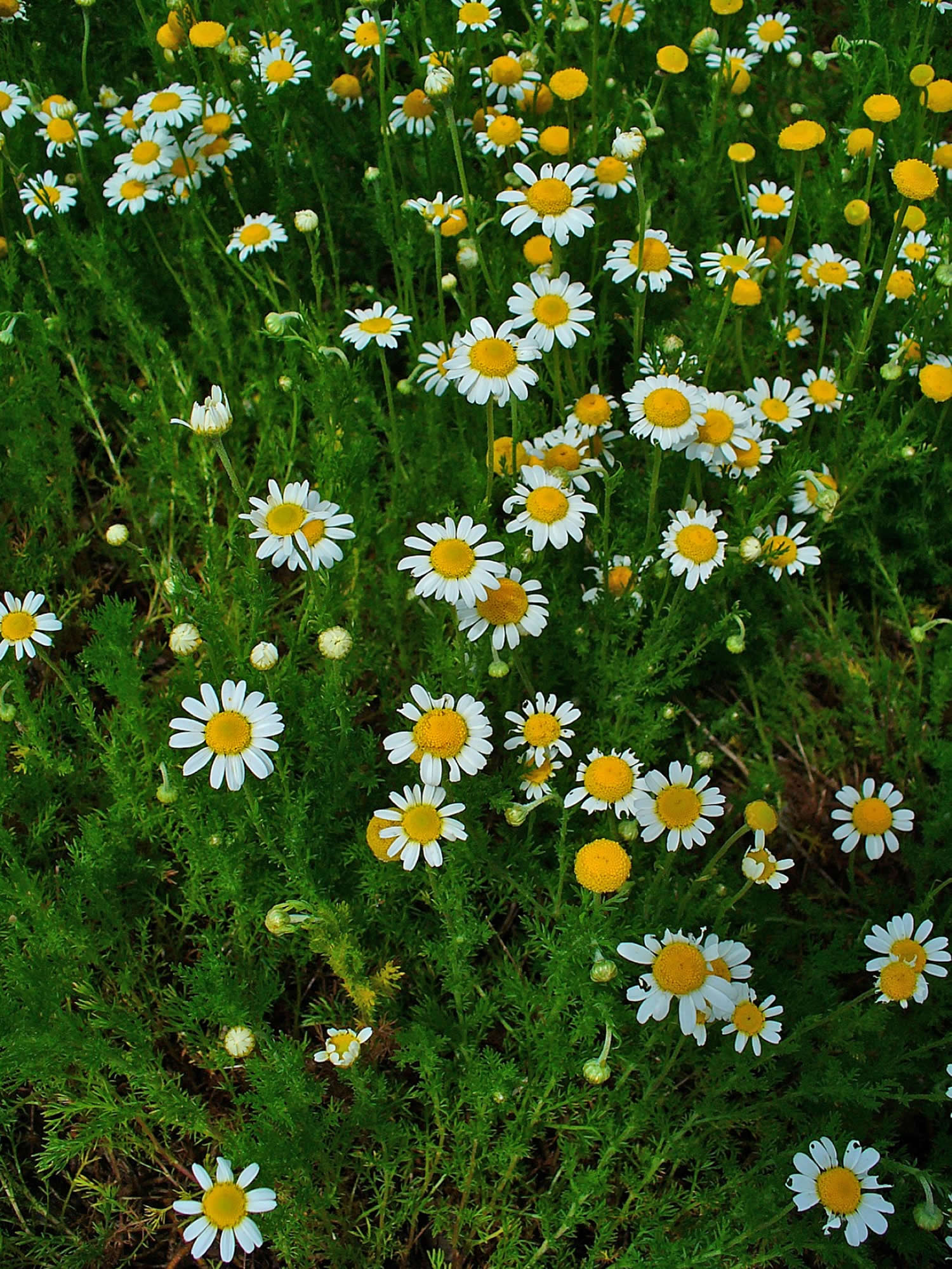
Bioactive Compounds of Camomile
Different classes of bioactive constituents are present in camomile, which have been isolated and used as medicinal preparations and cosmetics 4. The plant contains 0.24%–1.9% volatile oil, composed of a variety of separate oils. When exposed to steam distillation, the oil ranges in color from brilliant blue to deep green when fresh but turns to dark yellow after storage. Despite fading, the oil does not lose its potency. Approximately 120 secondary metabolites have been identified in chamomile, including 28 terpenoids and 36 flavonoids 5. The principal components of the essential oil extracted from the German camomile flowers are the terpenoids α-bisabolol and its oxide azulenes including chamazulene and acetylene derivatives. Chamazulene and bisabolol are very unstable and are best preserved in an alcoholic tincture. The essential oil of Roman camomile contains less chamazulene and is mainly constituted from esters of angelic acid and tiglic acid. It also contains farnesene and α-pinene. Roman chamomile contains up to 0.6% of sesquiterpene lactones of the germacranolide type, mainly nobilin and 3-epinobilin. Both α-bisabolol, bisabolol oxides A and B and chamazulene or azulenesse, farnesene and spiro-ether quiterpene lactones, glycosides, hydroxycoumarins, flavanoids (apigenin, luteolin, patuletin, and quercetin), coumarins (herniarin and umbelliferone), terpenoids, and mucilage are considered to be the major bio-active ingredients 6. Other major constituents of the flowers include several phenolic compounds, primarily the flavonoids apigenin, quercetin, patuletin as glucosides and various acetylated derivatives. Among flavonoids, apigenin is the most promising compound. It is present in very small quantities as free apigenin, but predominantly exists in the form of various glycosides 7.
Traditional Uses of Camomile
Traditionally, camomile has been used for centuries as an anti-inflammatory, antioxidant, mild astringent and healing medicine 8. As a traditional medicine, it is used to treat wounds, ulcers, eczema, gout, skin irritations, bruises, burns, canker sores, neuralgia, sciatica, rheumatic pain, hemorrhoids, mastitis and other ailments 9. Externally, camomile has been used to treat diaper rash, cracked nipples, chicken pox, ear and eye infections, disorders of the eyes including blocked tear ducts, conjunctivitis, nasal inflammation and poison ivy 10. Camomile is widely used to treat inflammations of the skin and mucous membranes, and for various bacterial infections of the skin, oral cavity and gums, and respiratory tract. Camomile in the form of an aqueous extract has been frequently used as a mild sedative to calm nerves and reduce anxiety, to treat hysteria, nightmares, insomnia and other sleep problems 11. Camomile has been valued as a digestive relaxant and has been used to treat various gastrointestinal disturbances including flatulence, indigestion, diarrhea, anorexia, motion sickness, nausea, and vomiting 12. Camomile has also been used to treat colic, croup, and fevers in children 13. It has been used as an emmenagogue (a substance that stimulates or increases menstrual flow) and a uterine tonic in women. It is also effective in arthritis, back pain, bedsores and stomach cramps.
Camomile benefits
What is camomile good for ?
The camomile most commonly used for its hypnotic and sedative effects is German chamomile (Matricaria recutita). Camomile extracts contain volatile oils, flavonoids and hydroxycoumarins. The flavonoid apeginin has benzodiazepine-like activity and is believed to be the active component of camomile.
Camomile has multiple biologic effects in vitro and in vivo, including antiinflammatory, antioxidant, analgesic and sedative effects. In humans, chamomile has been claimed to induce relaxation and sedation and has been used to treat nervousness and insomnia. It is also used for cough, bronchitis, fever, wounds, mouth ulcers, burns, circulatory disorders, dyspepsia, depression and hair loss. Chamomile oils are commonly used in aromatherapy and are found in many skin lotions, creams, soaps and cosmetics. Chamomile is most often used as an herbal tea, but can also be inhaled, applied topically, or taken orally as tablets or capsules usually in combination with other herbals such as passionflower, aloe or valerian or with mild analgesics or antihistamines. Chamomile has not been approved for use in any medical condition in the United States, but it is found in several hundred over-the-counter preparations. Side effects are uncommon may include nausea, dizziness and allergic reactions.
Sleep aid/sedation
Traditionally, camomile preparations such as camomile tea and essential oil aromatherapy have been used to treat insomnia and to induce sedation (calming effects). Camomile is widely regarded as a mild tranquillizer and sleep-inducer. Sedative effects may be due to the flavonoid, apigenin that binds to benzodiazepine receptors in the brain 14. Studies in preclinical models have shown anticonvulsant and central nervous system (CNS) depressant effects respectively. Clinical trials are notable for their absence, although ten cardiac patients are reported to have immediately fallen into a deep sleep lasting for 90 minutes after drinking chamomile tea 15. Chamomile extracts exhibit benzodiazepine-like hypnotic activity 16. In another study, inhalation of the vapor of camomile oil reduced a stress-induced increase in plasma adrenocorticotropic hormone (ACTH) levels. Diazepam, co-administered with the chamomile oil vapor, further reduced ACTH levels, while flumazenile, a benzodiazepine antagonist blocked the effect of camomile oil vapor on ACTH. According to Paladini et al. 17, the separation index (ratio between the maximal anxiolytic dose and the minimal sedative dose) for diazepam is 3 while for apigenin it is 10. Compounds, other than apigenin, present in extracts of chamomile can also bind benzodiazepine and gamma-aminobutyric acid (GABA) receptors in the brain and might be responsible for some sedative effect; however, many of these compounds are as yet unidentified.
Anxiety and seizure
Chamomile has been reported in the treatment of generalized anxiety disorder. But the reports seem contradictory as an earlier report suggests that German chamomile showed significant inhibition of generalized anxiety disorder activity 18. The recent results from the controlled clinical trial on chamomile extract for generalized anxiety disorder suggests that it may have modest anxiolytic activity in patients with mild to moderate generalized anxiety disorder 19. Extracts of chamomile (M. recutita) possess suitable effects on seizure induced by picrotoxin 20. Furthermore, apigenin has been shown to reduce the latency in the onset of picrotoxin-induced convulsions and reduction in locomotor activity but did not demonstrate any anxiolytic, myorelaxant, or anticonvulsant activities 21.
Anti-inflammatory and antiphlogistic properties of Camomile
The flowers of camomile contain 1–2% volatile oils including alpha-bisabolol, alpha-bisabolol oxides A and B, and matricin (usually converted to chamazulene and other flavonoids which possess anti-inflammatory and antiphlogistic properties 13. A study in human volunteers demonstrated that chamomile flavonoids and essential oils penetrate below the skin surface into the deeper skin layers 22. This is important for their use as topical anti-inflammatory agents. One of camomile’s anti-inflammatory activities involve the inhibition of LPS-induced prostaglandin E(2) release and attenuation of cyclooxygenase (COX-2) enzyme activity without affecting the constitutive form, COX-1 23.
Anticancer activity
Most evaluations of tumor growth inhibition by chamomile involve studies with apigenin which is one of the bioactive constituents of chamomile. Studies on preclinical models of skin, prostate, breast and ovarian cancer have shown promising growth inhibitory effects 24. In a recently conducted study, camomile extracts were shown to cause minimal growth inhibitory effects on normal cells, but showed significant reductions in cell viability in various human cancer cell lines. Camomile exposure induced apoptosis in cancer cells but not in normal cells at similar doses 25. The efficacy of the novel agent TBS-101, a mixture of seven standardized botanical extracts including chamomile has been recently tested. The results confirm it to have a good safety profile with significant anticancer activities against androgen-refractory human prostrate cancer PC-3 cells, both in vitro and in vivo situation 26.
Common cold
Common cold (acute viral nasopharyngitis) is the most common human disease. It is a mild viral infectious disease of the upper respiratory system. Typically common cold is not life-threatening, although its complications (such as pneumonia) can lead to death, if not properly treated. Studies indicate that inhaling steam with chamomile extract has been helpful in common cold symptoms 27; however, further research is needed to confirm these findings.
Cardiovascular conditions
It has been suggested that regular use of flavonoids consumed in food may reduce the risk of death from coronary heart disease in elderly men 28. A study assessed the flavonoid intake of 805 men aged 65–84 years who were followed up for 5 years. Flavonoid intake (analyzed in tertiles) was significantly inversely associated with mortality from coronary heart disease and showed an inverse relation with incidence of myocardial infarction. In another study 15, on twelve patients with cardiac disease who underwent cardiac catheterization, hemodynamic measurements obtained prior to and 30 minutes after the oral ingestion of chamomile tea exhibited a small but significant increase in the mean brachial artery pressure. No other significant hemodynamic changes were observed after chamomile consumption. Ten of the twelve patients fell into a deep sleep shortly after drinking the beverage. A large, well-designed randomized controlled trial is needed to assess the potential value of chamomile in improving cardiac health.
Colic/Diarrhea conditions
An apple pectin-camomile extract may help shorten the course of diarrhea in children as well as relieve symptoms associated with the condition. Two clinical trials have evaluated the efficacy of chamomile for the treatment of colic in children. Camomile tea was combined with other herbs (German camomile, vervain, licorice, fennel, balm mint) for administration. In a prospective, randomized, double-blind, placebo-controlled study, 68 healthy term infants who had colic (2 to 8 weeks old) received either herbal tea or placebo (glucose, flavoring). Each infant was offered treatment with every bout of colic, up to 150 mL/dose, no more than three times a day. After 7 days of treatment, parents reported that the tea eliminated the colic in 57% of the infants, whereas placebo was helpful in only 26%. No adverse effects with regard to the number of nighttime awakenings were noted in either group 29. Another study examined the effects of a chamomile extract and apple pectin preparation in 79 children (age 0.5–5.5 years) with acute, non-complicated diarrhea who received either the camomile/pectin preparation (n = 39) or a placebo (n = 40) for 3 days. Diarrhea ended sooner in children treated with chamomile and pectin (85%), than in the placebo group (58%) 30. These results provide evidence that chamomile can be used safely to treat infant colic disorders.
Eczema
Topical applications of camomile have been shown to be moderately effective in the treatment of atopic eczema 31. It was found to be about 60% as effective as 0.25% hydrocortisone cream 32. Roman chamomile of the Manzana type [Kamillosan (R)] may ease discomfort associated with eczema when applied as a cream containing chamomile extract. The Manzana type of chamomile is rich in active ingredients and does not exhibit chamomile-related allergenic potential. In a partially double-blind, randomized study carried out as a half-side comparison, Kamillosan(R) cream was compared with 0.5% hydrocortisone cream and a placebo consisting only of vehicle cream in patients suffering from medium-degree atopic eczema 33. After 2 weeks of treatment, Kamillosan(R) cream showed a slight superiority over 0.5% hydrocortisone and a marginal difference as compared to placebo. Further research is needed to evaluate the usefulness of topical chamomile in managing eczema.
Gastrointestinal conditions
Chamomile is used traditionally for numerous gastrointestinal conditions, including digestive disorders, “spasm” or colic, upset stomach, flatulence (gas), ulcers, and gastrointestinal irritation 34. Chamomile is especially helpful in dispelling gas, soothing the stomach, and relaxing the muscles that move food through the intestines. The protective effect of a commercial preparation (STW5, Iberogast), containing the extracts of bitter candy tuft, lemon balm leaf, camomile flower, caraway fruit, peppermint leaf, liquorice root, Angelica root, milk thistle fruit and greater celandine herb, against the development of gastric ulcers has been previously reported 35. STW5 extracts produced a dose dependent anti-ulcerogenic effect associated with a reduced acid output, an increased mucin secretion, an increase in prostaglandin E (2) release and a decrease in leukotrienes. The results obtained demonstrated that STW5 not only lowered gastric acidity as effectively as a commercial antacid, but was more effective in inhibiting secondary hyperacidity 35.
Hemorrhoids
Studies suggest that camomile ointment may improve hemorrhoids. Tinctures of chamomile can also be used in a sitz bath format. Tincture of Roman chamomile may reduce inflammation associated with hemorrhoids 36.
Health Promotion
It has been claimed that consumption of chamomile tea boosts the immune system and helps fight infections associated with colds. The health promoting benefits of chamomile was assessed in a study which involved fourteen volunteers who each drank five cups of the herbal tea daily for two consecutive weeks. Daily urine samples were taken and tested throughout the study, both before and after drinking chamomile tea. Drinking chamomile was associated with a significant increase in urinary levels of hippurate and glycine, which have been associated with increased antibacterial activity 37. In another study, chamomile relieved hypertensive symptoms and decreased the systolic blood pressure significantly, increasing urinary output 38. Additional studies are needed before a more definitive link between chamomile and its alleged health benefits can be established.
Inflammatory conditions
Inflammation is associated with many gastrointestinal disorders complaints, such as esophageal reflux, diverticular disease, and inflammatory disease 39. Studies in preclinical models suggest that chamomile inhibits Helicobacter pylori, the bacteria that can contribute to stomach ulcers 40. Chamomile is believed to be helpful in reducing smooth muscle spasms associated with various gastrointestinal inflammatory disorders. Chamomile is often used to treat mild skin irritations, including sunburn, rashes, sores and even eye inflammations 41 but its value in treating these conditions has not been shown with evidence-based research.
Mucositis
Mouth ulcers are a common condition with a variety of etiologies 42. Stomatitis is a major dose-limiting toxicity from bolus 5-fluorouracil-based (5-FU) chemotherapy regimens. A double-blind, placebo-controlled clinical trial including 164 patients was conducted 43. Patients were entered into the study at the time of their first cycle of 5-FU-based chemotherapy and were randomized to receive a chamomile or placebo mouthwash thrice daily for 14 days. There was no suggestion of any stomatitis difference between patients randomized to either protocol arm. There was also no suggestion of toxicity. Similar results were obtained with another prospective trial on chamomile in this situation. Data obtained from these clinical trials did not support the pre study hypothesis that chamomile could decrease 5-FU-induced stomatitis. The results remain unclear if camomile is helpful in this situation.
Osteoporosis
Osteoporosis is a metabolic bone disease resulting from low bone mass (osteopenia) due to excessive bone resorption. Sufferers are prone to bone fractures from relatively minor trauma. Agents which include selective estrogen receptor modulators or SERMs, biphosphonates, calcitonin are frequently used to prevent bone loss. To prevent bone loss that occurs with increasing age, chamomile extract was evaluated for its ability to stimulate the differentiation and mineralization of osteoblastic cells. Chamomile extract was shown to stimulate osteoblastic cell differentiation and to exhibit an anti-estrogenic effect, suggesting an estrogen receptor-related mechanism 44. However, further studies are needed before it can be considered for clinical use.
Diabetes
Studies suggest that chamomile ameliorates hyperglycemia and diabetic complications by suppressing blood sugar levels, increasing liver glycogen storage and inhibition of sorbitol in the human erythrocytes 45. The pharmacological activity of chamomile extract has shown to be independent of insulin secretion 46, and studies further reveal its protective effect on pancreatic beta cells in diminishing hyperglycemia-related oxidative stress 47. Additional studies are required to evaluate the usefulness of chamomile in managing diabetes.
Sore throat/hoarseness
The efficacy of lubrication of the endo-tracheal tube cuff with chamomile before intubation on postoperative sore throat and hoarseness was determined in a randomized double-blind study. 161 patients whose American Society of Anesthesiologists physical status was I or II, and undergoing elective surgical, orthopedic, gynecological or urological surgeries were divided in two groups. The study group received 10 puffs of camomile extract (Kamillosan M spray, total 370 mg of Camomile extract) at the site of the cuff of the endotracheal tube for lubrication, while the control group did not receive any lubrication before intubations. Standard general anesthesia with tracheal intubations was given in both groups. 41 out of 81 patients (50.6%) in the chamomile group reported no postoperative sore throat in the post-anesthesia care unit compared with 45 out of 80 patients (56.3%) in the control group. Postoperative sore throat and hoarseness both in the post-anesthesia care unit and at 24 h post-operation were not statistically different. Lubrication of endo-tracheal tube cuff with chamomile extract spray before intubations can not prevent post operative sore throat and hoarseness 48. Similar results were obtained in another double blind study 49.
Vaginitis
Vaginal inflammation is common in women of all ages. Vaginitis is associated with itching, vaginal discharge, or pain with urination. Atrophic vaginitis most commonly occurs in menopausal and postmenopausal women, and its occurrence is often associated with reduced levels of estrogen. Camomile douche may improve symptoms of vaginitis with few side effects 50. There is insufficient research data to allow conclusions concerning possible potential benefits of camomile for this condition.
Wound healing
The efficacy of topical use of chamomile to enhance wound healing was evaluated in a double-blind trial on 14 patients who underwent dermabrasion of tattoos. The effects on drying and epithelialization were observed, and chamomile was judged to be statistically efficacious in producing wound drying and in speeding epithelialization 51. Antimicrobial activity of the extract against various microorganisms was also assessed. The test group, on day 15, exhibited a greater reduction in the wound area when compared with the controls (61 % versus 48%), faster epithelialization and a significantly higher wound-breaking strength. In addition, wet and dry granulation tissue weight and hydroxyproline content were significantly higher. The increased rate of wound contraction, together with the increased wound-breaking strength, hydroxyproline content and histological observations, support the use of M. recutita in wound management 52. Recent studies suggest that chamomile caused complete wound healing faster than corticosteroids 53. However, further studies are needed before it can be considered for clinical use.
Quality-of-life in cancer patients
Essential oils obtained from Roman chamomile are the basic ingredients of aromatherapy. Clinical trials of aromatherapy in cancer patients have shown no statistically significant differences between treated and untreated patients 54. Another pilot study investigated the effects of aromatherapy massage on the anxiety and self-esteem experience in Korean elderly women. A quasi-experimental, control group, pretest-posttest design used 36 elderly females: 16 in the experimental group and 20 in the control group. Aromatherapy massage using lavender, chamomile, rosemary, and lemon was given to the experimental group only. Each massage session lasted 20 min, and was performed 3 times per week for two 3-week periods with an intervening 1-week break. The intervention produced significant differences in the anxiety and self-esteem. These results suggest that aromatherapy massage exerts positive effects on anxiety and self-esteem 55. However, more objective, clinical measures should be applied in a future study with a randomized placebo-controlled design.
Contraindications and Safety Issues with Camomile
A relatively low percentage of people are sensitive to camomile and develop allergic reactions 56. People sensitive to ragweed and chrysanthemums or other members of the Compositae family are more prone to develop contact allergies to camomile, especially if they take other drugs that help to trigger the sensitization.
- There have been reports of allergic reactions, including rare cases of anaphylaxis (a life-threatening allergic reaction), in people who have consumed or come into contact with chamomile products.
- People are more likely to experience allergic reactions to chamomile if they’re allergic to related plants such as ragweed, chrysanthemums, marigolds, or daisies.
- Interactions between chamomile and cyclosporine (a drug used to prevent rejection of organ transplants) and warfarin (a blood thinner) have been reported, and there are theoretical reasons to suspect that chamomile might interact with other drugs as well. Talk to your health care provider before taking chamomile if you’re taking any type of medicine.
A large-scale clinical trial was conducted in Hamburg, Germany, between 1985 and 1991 to study the development of contact dermatitis secondary to exposure to a mixture of components derived from the Compositae family. Twelve species of the Compositae family, including German chamomile, were selected and tested individually when the mixture induced allergic reactions. During the study, 3,851 individuals were tested using a patch with the plant extract 57. Of these patients, 118 (3.1%) experienced an allergic reaction. Further tests revealed that feverfew elicited the most allergic reactions (70.1% of patients) followed by chrysanthemums (63.6%) and tansy (60.8%). Camomile fell in the middle range (56.5%). A study involving 686 subjects exposed either to a sesquiterpene lactone mixture or a mixture of Compositae extracts led to allergic reactions in 4.5% of subjects 58. In another study it was shown that eye washing with chamomile tea in hay fever patients who have conjunctivitis exacerbates the eye inflammation, whereas no worsening of eye inflammation was noted when camomile tea was ingested orally 59. It is possible that some reports of allergic reactions to camomile may be due to contamination of chamomile by “dog chamomile,” a highly allergenic and bad-tasting plant of similar appearance. Evidence of cross-reactivity of camomile with other drugs is not well documented, and further study of this issue is needed prior to reaching conclusions. Safety in young children, pregnant or nursing women, or those with liver or kidney disease has not been established, although there have not been any credible reports of toxicity caused by this common beverage tea. Chamomile has not been implicated in causing serum enzyme elevations or clinically apparent liver injury 60.
Pregnancy and breast-feeding: Roman chamomile is LIKELY UNSAFE when taken by mouth in medicinal amounts during pregnancy. Roman chamomile is believed to cause miscarriages. Not enough is known about the safety of applying it to the skin during pregnancy. Avoid using Roman chamomile if you are pregnant.
It’s also best to avoid Roman chamomile if you are breast-feeding. Not enough is known about how it might affect the nursing infant.
Summary
Camomile has been used as an herbal medication since ancient times, is still popular today and probably will continue to be used in the future because it contains various bioactive phytochemicals that could provide therapeutic effects.
- Some preliminary studies suggest that a chamomile dietary supplement might be helpful for generalized anxiety disorder.
- Some research has found that products containing certain combinations of herbs that include chamomile may be of benefit for upset stomach, for diarrhea in children, and for infants with colic. But chamomile alone has not been shown to be helpful for these conditions.
Establishing whether or not therapeutic effects of camomile are beneficial to patients will require good clinical research and generation of scientific evidence. There is a need for continued efforts that focuses on various diseases, which are then consequently validated in clinical trials that will help in developing camomile as a promising therapeutic agent. Without such evidence, it will remain unclear whether these untested and unproven medical treatments are truly beneficial. It is advisable that the discriminate and proper use of camomile preparations could be safe and provide therapeutic benefits however the indiscriminate or improper use can be unsafe and harmful.
- Hansen HV, Christensen KIb. The common chamomile and the scentless may weed revisited. Taxon. International Association for Plant Taxonomy. 2009;Vol. 58:261–264.[↩]
- Srivastava JK, Shankar E, Gupta S. Chamomile: A herbal medicine of the past with bright future. Molecular medicine reports. 2010;3(6):895-901. doi:10.3892/mmr.2010.377. https://www.ncbi.nlm.nih.gov/pmc/articles/PMC2995283/[↩][↩]
- Complementary and alternative medicine use among elderly persons: one-year analysis of a Blue Shield Medicare supplement. Astin JA, Pelletier KR, Marie A, Haskell WL.J Gerontol A Biol Sci Med Sci. 2000 Jan; 55(1):M4-9.[↩]
- Der MA, Liberti L. Natural product medicine: A scientific guide to foods, drugs, cosmetics. George, Philadelphia: F. Stickley Co.; 1988.[↩]
- McKay DL, Blumberg JB. A review of the bioactivity and potential health benefits of chamomile tea (Matricaria recutita L.) Phytother Res. 2000;20:519–530. https://www.ncbi.nlm.nih.gov/pubmed/16628544[↩]
- Baser KH, Demirci B, Iscan G, et al. The essential oil constituents and antimicrobial activity of Anthemis aciphylla BOISS. Var. discoidea BOISS. Chem. Pharm. Bull. (Tokyo) 2006;54:222–225. https://www.jstage.jst.go.jp/article/cpb/54/2/54_2_222/_article[↩]
- Srivastava JK, Gupta S. Antiproliferative and apoptotic effects of chamomile extract in various human cancer cells. J Agric Food Chem. 2007;55:9470–9478. https://www.ncbi.nlm.nih.gov/pubmed/17939735[↩]
- Weiss RF. In: Herbal Medicine. Arcanum AB, editor. Beaconsfield, U.K: Beaconsfield publishers; 1988. pp. 22–28.[↩]
- Awang -Dennis VC. Taylor and Francis group. New York: CRC Press; 2006. The herbs of Choice: The therapeutic use of Phytomedicinals; p. 292.[↩]
- Newall CA, Anderson LA, Phillipson JD. Herbal medicine: A guide for health care professionals. Vol. 296. London: Pharmaceutical Press; p. 996.[↩]
- Forster HB, Niklas H, Lutz S. Antispasmodic effects of some medicinal plants. Planta Med. 1980;40:309–319. https://www.ncbi.nlm.nih.gov/pubmed/7220648[↩]
- Crotteau CA, Wright ST, Eglash A. Clinical inquiries; what is the best treatment for infants with colic? J Fam Pract. 2006;55:634–636. http://www.mdedge.com/jfponline/article/62263/pediatrics/what-best-treatment-infants-colic[↩]
- Peña D, Montes de Oca N, Rojas S. Anti-inflammatory and anti-diarrheic activity of Isocarpha cubana Blake. Pharmacologyonline. 2006;3:744–749.[↩][↩]
- Avallone R, Zanoli P, Corsi L, Cannazza G, Baraldi M. Benzodiazepine compounds and GABA in flower heads of matricaria chamomilla. Phytotherapy Res. 1996;10:177–179.[↩]
- Gould L, Reddy CV, Gomprecht RF. Cardiac effects of chamomile tea. J Clin Pharmacol. 1973;11:475–479. https://www.ncbi.nlm.nih.gov/pubmed/4490671[↩][↩]
- Shinomiya K, Inoue T, Utsu Y, Tokunaga S, Masuoka T, Ohmori A, Kamei C. Hypnotic activities of chamomile and passiflora extracts in sleep-disturbed rats. Biol Pharm Bull. 2005;28:808–810. https://www.jstage.jst.go.jp/article/bpb/28/5/28_5_808/_pdf/-char/en[↩]
- Paladini AC, Marder M, Viola H, Wolfman C, Wasowski C, Medina JH. Flavonoids and the central nervous system: from forgotten factors to potent anxiolytic compounds. J Pharm Pharmacol. 1999;51:519–526. https://www.ncbi.nlm.nih.gov/pubmed/10411210[↩]
- Awad R, Levac D, Cybulska P, Merali Z, Trudeau VL, Arnason JT. Effects of traditionally used anxiolytic botanicals on enzymes of the gamma-aminobutyric acid (GABA) system. Can J Physiol Pharmacol. 2007;85:933–942. https://www.ncbi.nlm.nih.gov/pubmed/18066140[↩]
- Amsterdam JD, Li Y, Soeller I, Rockwell K, Mao JJ, Shults J. A randomized, double-blind, placebo-controlled trial of oral Matricaria recutita (Chamomile) extract therapy for generalized anxiety disorder. J Clin Psychopharmacol. 2009;29:378–382. https://www.ncbi.nlm.nih.gov/pmc/articles/PMC3600416/[↩]
- Herdari MR, Dadollahi Z, Mehrabani M, Mehrabi H, Pourzadeh-Hosseini M, Behravan E, Etemad L. Study of antiseizure effects of Matricaria recutita extract in mice. Ann N Y Acad Sci. 2009;1171:300–304. https://www.ncbi.nlm.nih.gov/pubmed/19723069[↩]
- Avallone R, Zanoli P, Puia G, Kleinschnitz M, Schreier P, Baraldi M. Pharmacological profile of apigenin, a flavonoid isolated from Matricaria chamomilla. Biochem Pharmacol. 2000;59:1387–1394. https://www.ncbi.nlm.nih.gov/pubmed/10751547[↩]
- Merfort I, Heilmann J, Hagedorn-Leweke U, Lippold BC. In vivo skin penetration studies of camomile flavones. Pharmazie. 1994;49:509–511.[↩]
- Srivastava JK, Pandey M, Gupta S. Chamomile, a novel and selective Cox-2 inhibitor with anti-inflammatory activity. Life Sci. 2009;85:663–669. https://www.ncbi.nlm.nih.gov/pmc/articles/PMC2784024/[↩]
- Way TD, Kao MC, Lin JK. Apigenin induces apoptosis through proteasomal degradation of HER2/neu in HER2/neu-overexpressing breast cancer cells via the phosphatidylinositol-3′-kinase/Akt-dependent pathway. J Biol Chem. 2004;279:4479–4489. https://www.ncbi.nlm.nih.gov/pubmed/14602723[↩]
- Srivastava JK, Gupta S. Antiproliferative and apoptotic effects of chamomile extract in various human cancer cells. J Agric Food Chem. 2007;55:9470–9478.[↩]
- Evans S, Dizeyi N, Abrahamsson PA, Persson J. The effect of a novel botanical agent TBS-101 on invasive prostrate cancer in animal models. Anti Cancer Res. 2009;10:3917–3924.[↩]
- Saller R, Beschomer M, Hellenbrecht D. Dose dependency of symptomatic relief of complaints by chamomile steam inhalation in patients with common cold. Eur J Pharmacol. 1990;183:728–729.[↩]
- Hertog MG, Feskens EJ, Hollman PC, Katan MB, Kromhout D. Dietary antioxidant flavonoids and risk of coronary heart disease: the Zutphen Elderly Study. Lancet. 1993;342:1007–1011. https://www.ncbi.nlm.nih.gov/pubmed/8105262[↩]
- Gardiner P. Complementary, Holistic, and Integrative Medicine: Chamomile. Pediatr Rev. 2007;28:16–18. https://www.ncbi.nlm.nih.gov/pubmed/17400821[↩]
- Kell T. More on infant colic. Birth Gaz. 1997;13:3. https://www.ncbi.nlm.nih.gov/pubmed/9250047[↩]
- Nissen HP, Blitz H, Kreyel HW. Prolifometrie, eine methode zur beurteilung der therapeutischen wirsamkeit kon Kamillosan®-Salbe. Z Hautkr. 1988;63:84–90.[↩]
- Albring M, Albrecht H, Alcorn G, Lüker PW. The measuring of the anti-inflammatory effect of a compound on the skin of volunteers. Meth Find Exp Clin Pharmacol. 1983;5:75–77. https://www.ncbi.nlm.nih.gov/pubmed/6664158[↩]
- Patzelt-Wenczler R, Ponce-Pöschl E. Proof of efficacy of Kamillosan(R) cream in atopic eczema. Eur. J Med Res. 2000;5:171–175. https://www.ncbi.nlm.nih.gov/pubmed/10799352[↩]
- Kroll U, Cordes C. Pharmaceutical prerequisites for a multi-target therapy. Phytomedicine. 2006;5:12–19. https://www.ncbi.nlm.nih.gov/pubmed/16857355[↩]
- Khayyal MT, Seif-El-Nasr M, El-Ghazaly MA, Okpanyi SN, Kelber O, Weiser D. Mechanisms involved in the gastro-protective effect of STW 5 (Iberogast) and its components against ulcers and rebound acidity. Phytomedicine. 2006;13:56–66. https://www.ncbi.nlm.nih.gov/pubmed/16963243[↩][↩]
- Lyseng-Williamson KA, Perry CM. Micronised purified flavonoid fraction: a review of its use in chronic venous insufficiency, venous ulcers, and haemorrhoids. Drugs. 2003;63:71–100. https://www.ncbi.nlm.nih.gov/pubmed/12487623[↩]
- Wang Y, Tang H, Nicholson JK, Hylands PJ, Sampson J, Holmes E. A metabonomic strategy for the detection of the metabolic effects of chamomile (Matricaria recutita L.) ingestion. J Agric Food Chem. 2005;53:191–196. https://www.ncbi.nlm.nih.gov/pubmed/15656647[↩]
- Zeggwagh NA, Moufid A, Michel JB, Eddouks M. Hypotensive effect of Chamaemelum nobile aqueous extract in spontaneously hypertensive rats. Clin Exp Hypertens. 2009;31:440–450. https://www.ncbi.nlm.nih.gov/pubmed/19811353[↩]
- Ramos-e-Silva M, Ferreira AF, Bibas R, Carneiro S. Clinical evaluation of fluid extract of Chamomilla recutita for oral aphthae. J Drugs Dermatol. 2006;5:612–617. https://www.ncbi.nlm.nih.gov/pubmed/16865865[↩]
- Weseler A, Geiss HK, Saller R, Reichling JA. Novel colorimetric broth microdilution method to determine the minimum inhibitory concentration (MIC) of antibiotics and essential oils against Helicobacter pylori. Pharmazie. 2005;60:498–502. https://www.ncbi.nlm.nih.gov/pubmed/16076074[↩]
- Tubaro A, Zilli C, Redaelli C, Della Loggia R. Evaluation of antiinflammatory activity of a chamomile extract after topical application. Planta Med. 1984;50:359. https://www.ncbi.nlm.nih.gov/pubmed/6505092[↩]
- Gonsalves WC, Wrightson AS, Henry RG. Common oral conditions in older persons. Am Fam Physician. 2008;78:845–852. https://www.ncbi.nlm.nih.gov/pubmed/18841733[↩]
- Fidler P, Loprinzi CL, O’Fallon JR, Leitch JM, Lee JK, Hayes DL, Novotny P, Clemens-Schutjer D, Bartel J, Michalak JC. Prospective evaluation of a chamomile mouthwash for prevention of 5-FU induced oral mucositis. Cancer. 1996;77:522–525. https://www.ncbi.nlm.nih.gov/pubmed/8630960[↩]
- Kassi E, Papoutsi Z, Fokialakis N, Messari I, Mitakou S, Moutsatsou P. Greek plant extracts exhibit selective estrogen receptor modulator (SERM)-like properties. J Agric Food Chem. 2004;52:6956–6961. https://www.ncbi.nlm.nih.gov/pubmed/15537303[↩]
- Kato A, Minoshima Y, Yamamoto J, Adachi I, Watson AA, Nash RJ. Protective effects of dietary chamomile tea on diabetic complications. J Agric Food Chem. 2008;56:8206–8211. https://www.ncbi.nlm.nih.gov/pubmed/18681440[↩]
- Eddouks M, Lemhadri A, Zeggwah NA, Michel JB. Potent hypoglycaemic activity of the aqueous extract of chamaemelum nobile in normal and streptozotocin-induced diabetic rats. Diabetes Res Clin Pract. 2005;67:189–195. https://www.ncbi.nlm.nih.gov/pubmed/15713350[↩]
- Cemek M, Kaga S, Simsek N, Buyukokuroglu ME, Konuk M. Antihyperglycemic and antooxidative potential of Matricaria chamomilla L. in streptozotocin-induced diabetic rats. J. Nat Med. 2008;62:284–293. https://www.ncbi.nlm.nih.gov/pubmed/18404309[↩]
- Charuluxananan S, Sumethawattana P, Kosawiboonpol R, Somboonviboon W, Werawataganon T. Effectiveness of lubrication of endotracheal tube cuff with chamomile-extract for prevention of postoperative sore throat and hoarseness. J Med Assoc Thai. 2004;87:185–189. https://www.ncbi.nlm.nih.gov/pubmed/16083185[↩]
- Kyokong O, Charuluxananan S, Muangmingsuk V. Efficacy of chamomile-extract spray for prevention of post-operative sore throat. J Med AssocThai. 2002;85:180–185. https://www.ncbi.nlm.nih.gov/pubmed/12188410[↩]
- Benetti C, Manganelli F. Clinical experiences in the pharmacological treatment of vaginitis with a camomile-extract vaginal douche. Minerva Ginecol. 1985;37:799–801. https://www.ncbi.nlm.nih.gov/pubmed/4094717[↩]
- Glowania HJ, Raulin C, Swoboda M. Effect of chamomile on wound healing–a clinical double-blind study. Z Hautkr. 1987;62:1267–1271. https://www.ncbi.nlm.nih.gov/pubmed/3318194[↩]
- Nayak BS, Raju SS, Rao AV. Wound healing activity of Matricaria recutita L. extract. J Wound Care. 2007;16:298–302. https://www.ncbi.nlm.nih.gov/pubmed/17708380[↩]
- Martins MD, Marques MM, Bussadori SK, Martins MA, Pavesi VC, Mesquita-Ferrari RA, Fernandes KP. Comparative analysis between Chamomilla recutita and corticosteroids on wound healing. An in vitro and in vivo study. Phytother Res. 2009;23:274–278. https://www.ncbi.nlm.nih.gov/pubmed/18803230[↩]
- Wilcock A, Manderson C, Weller R, Walker G, Carr D, Carey AM, Broadhurst D, Mew J, Ernst E. Does aromatherapy massage benefit patients with cancer attending a specialist palliative care day centre? Palliat Med. 2004;18:287–290. https://www.ncbi.nlm.nih.gov/pubmed/15198118[↩]
- Hadfield N. The role of aromatherapy massage in reducing anxiety in patients with malignant brain tumours. Int J Palliat Nurs. 2001;7:279–285. https://www.ncbi.nlm.nih.gov/pubmed/12066022[↩]
- Budzinski JW, Foster BC, Vandenhoek S, Arnason JT. An in vitro evaluation of human cytochrome P450 3A4 inhibition by selected commercial herbal extracts and tinctures. Phytomedicine. 2000;7:273–282. https://www.ncbi.nlm.nih.gov/pubmed/10969720[↩]
- Hausen BM. A 6-year experience with compositae mix. Am J Contact Dermat. 1996;7:94–99. https://www.ncbi.nlm.nih.gov/pubmed/8796749[↩]
- Paulsen E, Andersen KE, Hausen BM. Compositae dermatitis in a Danish dermatology department in one year (I). Results of routine patch testing with the sesquiterpene lactone mix supplemented with aimed patch testing with extracts and sesquiterpene lactones of Compositae plants. Contact Dermatitis. 1993;29:6–10. https://www.ncbi.nlm.nih.gov/pubmed/8365167[↩]
- Subiza J, Subiza JL, Alonso M, Hinojosa M, Garcia R, Jerez M, Subiza E. Allergic conjunctivitis to chamomile tea. Ann Allergy. 1990;65:127–132. https://www.ncbi.nlm.nih.gov/pubmed/2382873[↩]
- Chamomile. https://livertox.nlm.nih.gov//Chamomile.htm[↩]
